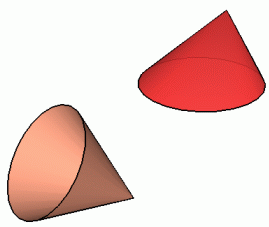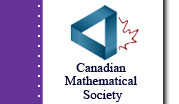|
Mathematics Glossary
- Middle Years
Maxine Stinka, Saskatchewan Education,
Curriculum and Instruction
Note: The
definitions included here are those that are used in the Saskatchewan
Education document "Mathematics 6-9: A Curriculum Guide for the
Middle Level".
Various mathematics dictionaries
may have different definitions. These definitions are designed
to be meaningful to middle level mathematics teachers.
Select the first letter of
the term that you wish to look for.
A | B
| C | D
| E | F
| H | I
| J | K
| L | M
| N | O
| P | Q
| R | S
| T | U
| V | W
| X | Y
| Z
C
capacity
- the amount a container holds.
census
- when information is gathered from all people
in the population,
the activity is called a census. Polls or surveys are a method
of collecting data
by asking people to give their answers to a set of questions.
central angle of circle
- the angle formed at the centre of a circle
by the intersection of two radii.
central angle of a regular
polygon
- an angle at the centre of the polygon
.
centroid
- the point of intersection of the three medians of a triangle.
centre
of rotation
- the point around which an object is rotated.
(see rotation
)
chord
- a segment joining two points on a circle.
circle graph
- a graph of statistical data
where a circle is subdivided into regions that represent
the percent
of the total.
circumcenter of a triangle
- The point which is the center of a circle that includes the vertices of the triangle on its circumference. The circumcenter can be found by looking at the intersection of the perpendicular bisectors of the any two of the sides of the triangle.

circumference
- the distance around (perimeter of) a circle.
coefficient
- the numerical factor of a term. e.g. The
coefficient of -3x2y is -3. The coefficient of a3b4c2
is 1.
commission
- earnings based on the amount of total sales.
commutative property
- the order of numbers in a calculation does
not affect the result. e.g. Addition is commutative since a +
b = b + a. E.g. 3 + 5 = 5 + 3. Subtraction is not commutative
since 8 - 2 and 2 - 8 are not equal.
compatible numbers
- numbers that are easy to manipulate mentally.
e.g. 25 X 4, 8 + 2
compensation
- adjusting an estimated
answer up or down to more closely approximate the value.
complementary angles
- two angles whose measures total 90o.
composite number
- a whole number (integer) that has more than
2 different factors. e.g. 18 has factors 1, 18, 2, 9, 3, 6 so
it is composite.
compound bar graph
- a bar graph that compares two or more quantities
simultaneously.
compound event
- the outcome of a probability experiment that
involves more than one object. e.g. when you roll two dice and
the result is a 5 on one and a 2 on the other, this is a compound
event.
compound interest
concave polygon
- a polygon with at least one interior angle with measure greater than
180o.
cone
- the surface or solid formed by rays emanating from a fixed point (vertex) passing through a closed planar curve called the base.
- In common usage, the word cone refers to a right circular cone, which is a cone whose base is a circle and whose vertex is directly above or below the center of the circle.

congruent
- figures that have the same size and same
shape.
angles
- angles that have the same measure.
triangles
- triangles that are the same size and shape.
convex polygon
- a polygon
with each interior angle measuring less than 180o.
coordinate
plane
- a plane that is divided into four quadrants
by drawing a vertical and a horizontal line that intersect at
a point called the origin. Used for graphing ordered
pairs, the coordinates .
coordinates
- the ordered
pair that names the location of a point on the coordinate
plane. The first number in the ordered pair is called the abscissa
and the second number is the ordinate.
corresponding angles
pairs of corresponding
angles are:
a and e
b and f
c and g
d and h
|

|
in triangles
pairs of corresponding
angles are:
< A and < X
< B and < Y
< C and < Z
|

|
Corresponding angles are congruent
if the triangles are similar or congruent.
cube root
- a number that when cubed (taken to the power
of 3) gives the original number.
Questions or comments about the glossary can
be directed to TheCentralizer@MathCentral.uregina.ca
or see About Us
page for more information.
|





